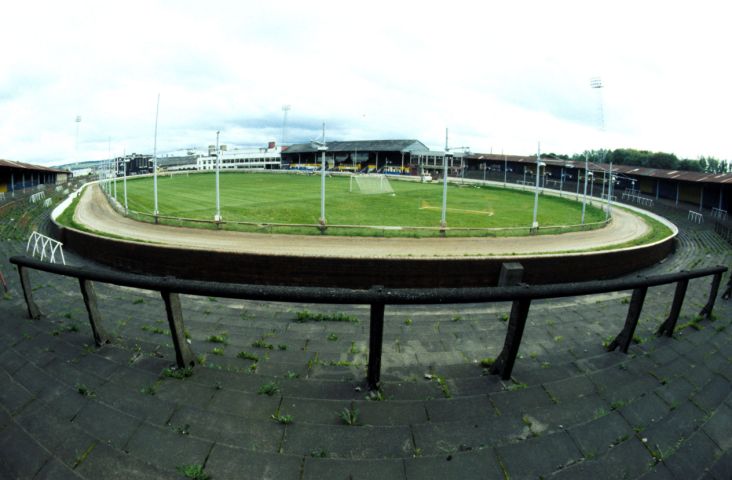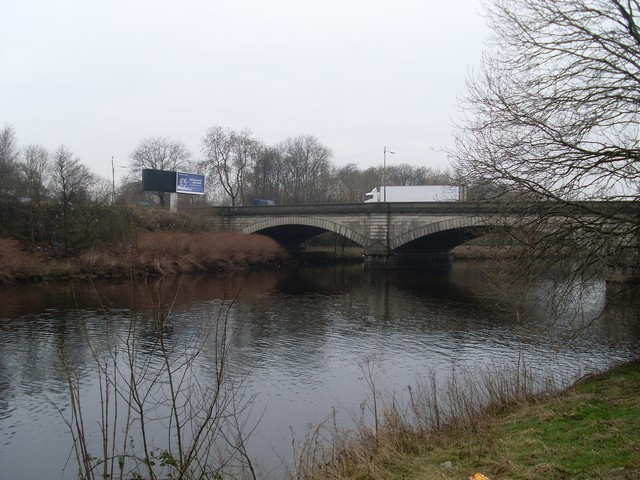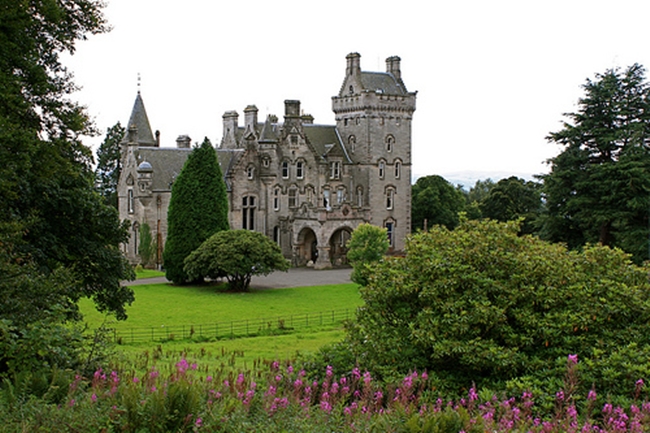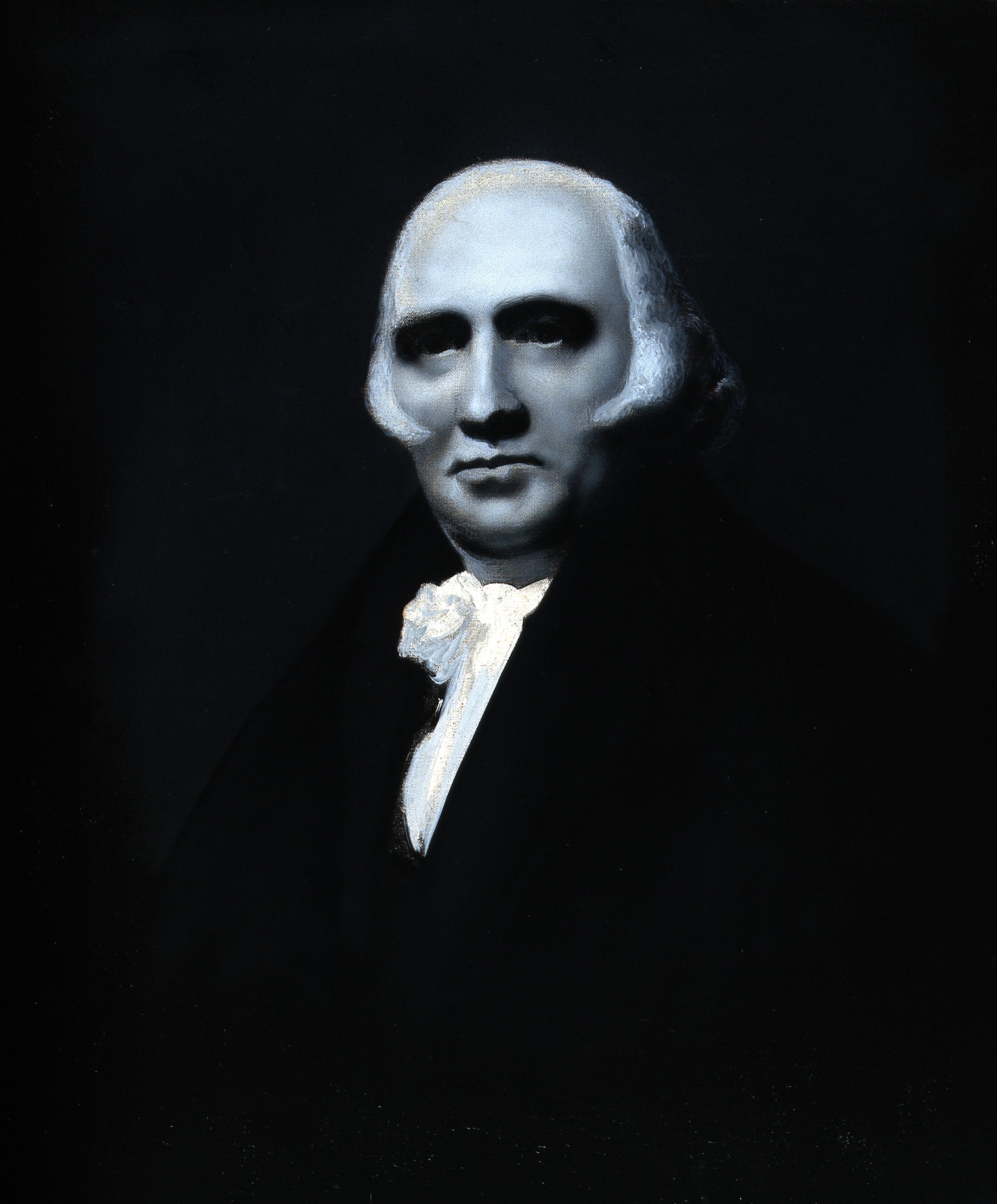|
Shawfield
Shawfield is an industrial/commercial area of the Royal Burgh of Rutherglen in South Lanarkshire, Scotland, located to the north of the town centre. It is bordered to the east by the River Clyde, to the north by the Glasgow neighbourhood of Oatlands and the adjacent Richmond Park, to the south-west by Glasgow's Polmadie and Toryglen districts, and to the south-east by Rutherglen's historic Main Street and its Burnhill neighbourhood, although it is separated from these southerly areas by the West Coast Main Line railway tracks and the M74 motorway. A road bridge connects Shawfield to the Dalmarnock, Bridgeton and Glasgow Green areas. Shawfield is a familiar name to many Scottish sports fans, as the stadium of that name is the national venue for greyhound racing and the former home of Clyde F.C. Early history Documentation states that in 1611 the estate of Shawfield was in the hands of the family of Claud Hamilton. His grandson James Hamilton was forced to sell the estate and ... [...More Info...] [...Related Items...] OR: [Wikipedia] [Google] [Baidu] |
Shawfield Stadium
Shawfield Stadium is a closed greyhound racing, football and speedway venue in the Shawfield district of the town of Rutherglen, South Lanarkshire, Scotland, located close to the boundary with Glasgow. Originally a football ground, Shawfield was home to Clyde F.C. from 1898 to 1986. Greyhound racing was introduced in 1932, and the stadium hosted the Scottish Greyhound Derby from 1970 to 1985 and from 1989 to 2019. The Glasgow Tigers speedway team were also based there, from 1988 to 1995 and 1997 to 1998, with the Scottish Monarchs also racing there in 1996. Other sports including boxing and athletics were also staged at Shawfield. On 19 March 2020, an announcement was made to suspend racing because of the COVID-19 pandemic. In the following two years the majority of trainers moved their greyhounds to other venues as the track became derelict. During October 2022, the stadium's owner Billy King died, ending the likelihood of it ever reopening. Greyhound Racing Competitions ... [...More Info...] [...Related Items...] OR: [Wikipedia] [Google] [Baidu] |
Rutherglen
Rutherglen (, sco, Ruglen, gd, An Ruadh-Ghleann) is a town in South Lanarkshire, Scotland, immediately south-east of the city of Glasgow, from its centre and directly south of the River Clyde. Having existed as a Lanarkshire burgh in its own right for more than 800 years, in 1975 Rutherglen lost its own local council and administratively became a component of the City of Glasgow (1975–1996), City of Glasgow District within the Strathclyde Local government areas of Scotland 1973–96, region (along with neighbouring Cambuslang). In 1996 the towns were reallocated to the South Lanarkshire Subdivisions of Scotland, council area.From a pawnbrokers to Parliament - Tommy McAvoy looks back on a career that too ... [...More Info...] [...Related Items...] OR: [Wikipedia] [Google] [Baidu] |
Claud Hamilton Of Shawfield
Sir Claud Hamilton of Shawfield, PC (Ire) (died 1614), also called of Leckprevick, a younger son of Claud Hamilton, 1st Lord Paisley in Scotland, was a gentleman of the privy chamber of King James VI and I, an undertaker in the Plantation of Ulster, and a privy counsellor in Ireland. Birth and origins Claud was born between 1575 and 1585, probably at Paisley, near Glasgow, Scotland, his parents' habitual residence. He was the third son of Claud Hamilton and his wife Margaret Seton. His father was at that time only a younger brother of James Hamilton, 3rd Earl of Arran but would later be created 1st Lord Paisley. His father's family descended from Walter FitzGilbert, the founder of the House of Hamilton, who had received the barony of Cadzow from Robert the Bruce. Claud's mother was a daughter of George Seton, 7th Lord Seton, by his wife Isobel Hamilton. Both parents were Scottish and seem to have been both Catholic. They had married in 1574 at Niddry Castle, West Lothia ... [...More Info...] [...Related Items...] OR: [Wikipedia] [Google] [Baidu] |
Walter Campbell Of Shawfield
Walter Campbell, 3rd of Shawfield and Islay and 9th of Skipness (29 December 1741 – 19 October 1816) was a Scottish landowner, advocate and Rector of Glasgow University. Early life Campbell was born on 29 December 1741 into the Clan Campbell of Cawdor. He was a son of John Campbell of Shawfield (1696–1746) and Lady Henrietta Cunningham, who married in 1735. His father had been previously married, without issue, to Lady Margaret Campbell (a daughter of Hugh Campbell, 3rd Earl of Loudoun and sister of John Campbell, 4th Earl of Loudoun). His older brothers were Daniel Campbell, 2nd of Shawfield (an MP for Lanarkshire who died unmarried in 1777) and John Campbell, 8th of Skipness. His maternal grandparents were William Cunningham, 12th Earl of Glencairn and Lady Henrietta Stewart (second daughter of Alexander Stewart, 3rd Earl of Galloway and Lady Mary Douglas, a daughter of James Douglas, 2nd Earl of Queensberry). His cousins James and John both became Earls of Glencairn. His ... [...More Info...] [...Related Items...] OR: [Wikipedia] [Google] [Baidu] |
Daniel Campbell (died 1753)
Daniel Campbell (1671/72 – 1753), or Donald Campbell, of Shawfield and Islay, was a leading Glasgow merchant, slave trader and Member of Parliament, nicknamed "Great Daniel" because of his size and great wealth. Dates Campbell was the eldest son of Walter Campbell of Skipnish, and was born about 1671. In many books of reference he is stated to have been born in 1696 and to have died in 1777, the former date being that of his son John Campbell's birth, and the latter that of his grandson Daniel Campbell's death. Merchant At the age of 22 he set up business in New England, before settling in Glasgow, where he traded tobacco for iron ore. He also engaged in the slave trade and in finance. He was very successful as a merchant, and in 1707 purchased the estate of Shawfield or Schawfield, in Rutherglen, from Sir James Hamilton. He also came to possess the valuable estate of Woodhall, near Holytown. Member of Parliament A follower of the Duke of Argyll, he represented Inverary in th ... [...More Info...] [...Related Items...] OR: [Wikipedia] [Google] [Baidu] |
Rutherglen Bridge
The Rutherglen Bridge or the Shawfield Bridge is a bridge which was built 1893–96, which crosses the River Clyde, in Scotland. It connects Shawfield, the most northerly district in the town of Rutherglen, and the south-side Glasgow district of Oatlands, with the Glasgow East End districts of Dalmarnock, Glasgow Green and Bridgeton. Bridgeton is in fact named after the first bridge at the site that was constructed in 1776 and designed by James Watt, which stood until 1890. The road is part of the Glasgow East End Regeneration Route running between the M8 and M74 motorways. The Glasgow side of the bridge is a convenient point for walkers and cyclists to join the Clyde Walkway or National Cycle Route 75 which share a tarmac path along the river at this point. It should not be confused with the nearby Dalmarnock Bridge Dalmarnock (, gd, Dail Mheàrnaig) is a district in the Scottish city of Glasgow. It is situated east of the city centre, directly north of the Rive ... [...More Info...] [...Related Items...] OR: [Wikipedia] [Google] [Baidu] |
John White, 1st Baron Overtoun
John Campbell White, 1st Baron Overtoun, (21 November 1843 – 15 February 1908) was a Scottish chemical manufacturer, supporter of religious causes, philanthropist and Liberal politician. He was raised to the peerage by Gladstone in 1893, and in 1905 was granted the Freedom of the City of Rutherglen (where his chemical works was based), following being honoured in the same fashion by Dumbarton two years earlier, in recognition of his philanthropic endeavours. White's persona as a generous and committed Scottish Presbyterian was at odds with his exploitation of the workers at his Shawfield Chemical Works, the source of his great wealth. Politician and leader of the nascent Labour Party, Keir Hardie, exposed the scandalous working conditions there in a series of pamphlets published in 1899 entitled ''White Slaves''. Background and education Lord Overtoun's father, James White of Overtoun (1812–1884) was originally a lawyer, who had left the legal profession to join John & ... [...More Info...] [...Related Items...] OR: [Wikipedia] [Google] [Baidu] |
Islay
Islay ( ; gd, Ìle, sco, Ila) is the southernmost island of the Inner Hebrides of Scotland. Known as "The Queen of the Hebrides", it lies in Argyll just south west of Jura, Scotland, Jura and around north of the Northern Irish coast. The island's capital is Bowmore where the distinctive round Kilarrow Parish Church and a distillery are located. Port Ellen is the main port. Islay is the fifth-largest Scottish island and the eighth-largest List of islands of the British Isles, island of the British Isles, with a total area of almost . There is ample evidence of the prehistoric settlement of Islay and the first written reference may have come in the first century AD. The island had become part of the Gaelic Kingdom of Dál Riata during the Scotland in the Early Middle Ages, Early Middle Ages before being absorbed into the Norse Kingdom of the Isles. The later medieval period marked a "cultural high point" with the transfer of the Hebrides to the Kingdom of Scotland and the eme ... [...More Info...] [...Related Items...] OR: [Wikipedia] [Google] [Baidu] |
Oatlands, Glasgow
Oatlands is an area in the city of Glasgow, Scotland. It is situated south of the River Clyde, falls within the Southside Central ward under Glasgow City Council, and is part of the Gorbals historic area. Its boundaries are Hutchesontown and the Southern Necropolis cemetery to the west, Polmadie to the south (across the M74 motorway and West Coast Main Line railway), Shawfield (part of the town of Rutherglen) to the east, and Glasgow Green public park to the north (across the River Clyde). Oatlands is connected to the Green via Polmadie Bridge which was dismantled in 2015 due to structural safety concerns and replaced in 2018. History Until the 1990s, the area was characterised by four-storey red sandstone tenements built at the end of the 19th century and the start of the 20th,A few home truths The Herald, 9 Septemb ... [...More Info...] [...Related Items...] OR: [Wikipedia] [Google] [Baidu] |
Dalmarnock
Dalmarnock (, gd, Dail Mheàrnaig) is a district in the Scottish city of Glasgow. It is situated east of the city centre, directly north of the River Clyde opposite the town of Rutherglen. It is also bounded by the Glasgow neighbourhoods of Parkhead to the north-east and Bridgeton to the north-west. History The area was once heavily industrialised.OS National Grid Maps, 1944-1967 Explore georeferenced maps () Sir William Arrol & Co. had its extensive engineering works at Dunn Street and Balti ... [...More Info...] [...Related Items...] OR: [Wikipedia] [Google] [Baidu] |
Robert Cleghorn
Robert Cleghorn MD FRSE FFPSG PRMS (1755 – 18 June 1821) was a Scottish physician and pharmacologist. Life Little is known of his early life. He is thought to have been born around 1755. He studied medicine at the University of Edinburgh, graduating with an MD in 1783. He was in general medical practice as a GP in Glasgow from 1785, then in 1788 began lecturing in medicine, then in 1791 began lecturing in chemistry. In 1818, he was awarded a professorship in chemistry and materia medica at the University of Glasgow, a role continued until his death. At this point he lived at Spruells Land on the north side of the Trongate. As a physician he worked at the Glasgow Royal Asylum at Gartnavel, and Glasgow Royal Infirmary, previously known as the Old Town Hospital. His position at Gartnavel was filled by Dr John Balmanno. He was elected a Fellow of the Royal Society of Edinburgh in 1790, his proposers being Andrew Dalzell, Dugald Stewart and James Gregory. He died in Shawfie ... [...More Info...] [...Related Items...] OR: [Wikipedia] [Google] [Baidu] |
James Hamilton, 2nd Earl Of Abercorn
James Hamilton, 2nd Earl of Abercorn ( – c. 1670) was a Catholic Scottish nobleman. He, his wife, his mother, and most of his family were persecuted by the kirk as recusants. Implementing his father's will, he gave his Irish title of Baron Hamilton of Strabane to his younger brother Claud. His younger brothers inherited his father's Irish lands, while he received the Scottish ones, which he squandered away, being deep in debt in his later days. Birth and origins James was born about 1604, probably in Paisley, Scotland. He was the eldest son of James Hamilton and his wife Marion Boyd. His father was an undertaker in the plantation of Ulster and would be created 1st Earl of Abercorn by James VI and I in 1606. His paternal grandfather was Claud Hamilton, 1st Lord of Paisley. James's mother was the eldest daughter of Thomas Boyd, 6th Lord Boyd of Kilmarnock in Scotland. The Boyds were an old Scottish family, which would in 1661 be granted the ti ... [...More Info...] [...Related Items...] OR: [Wikipedia] [Google] [Baidu] |







